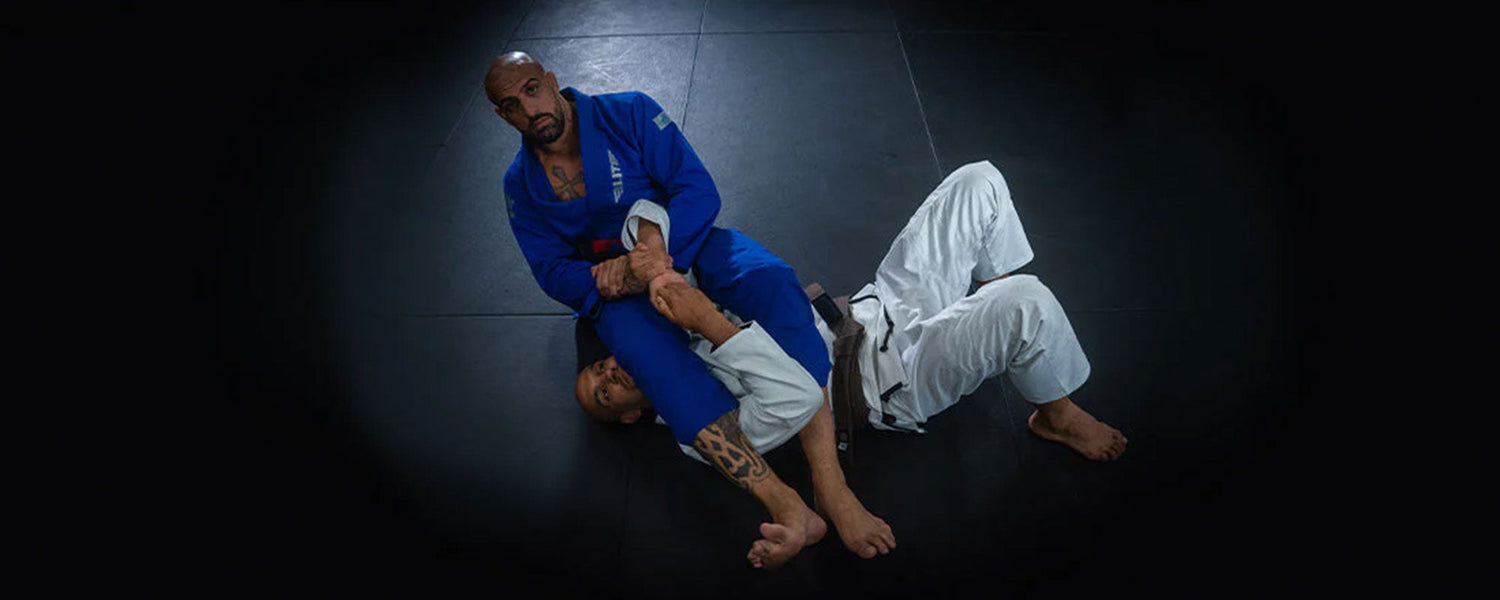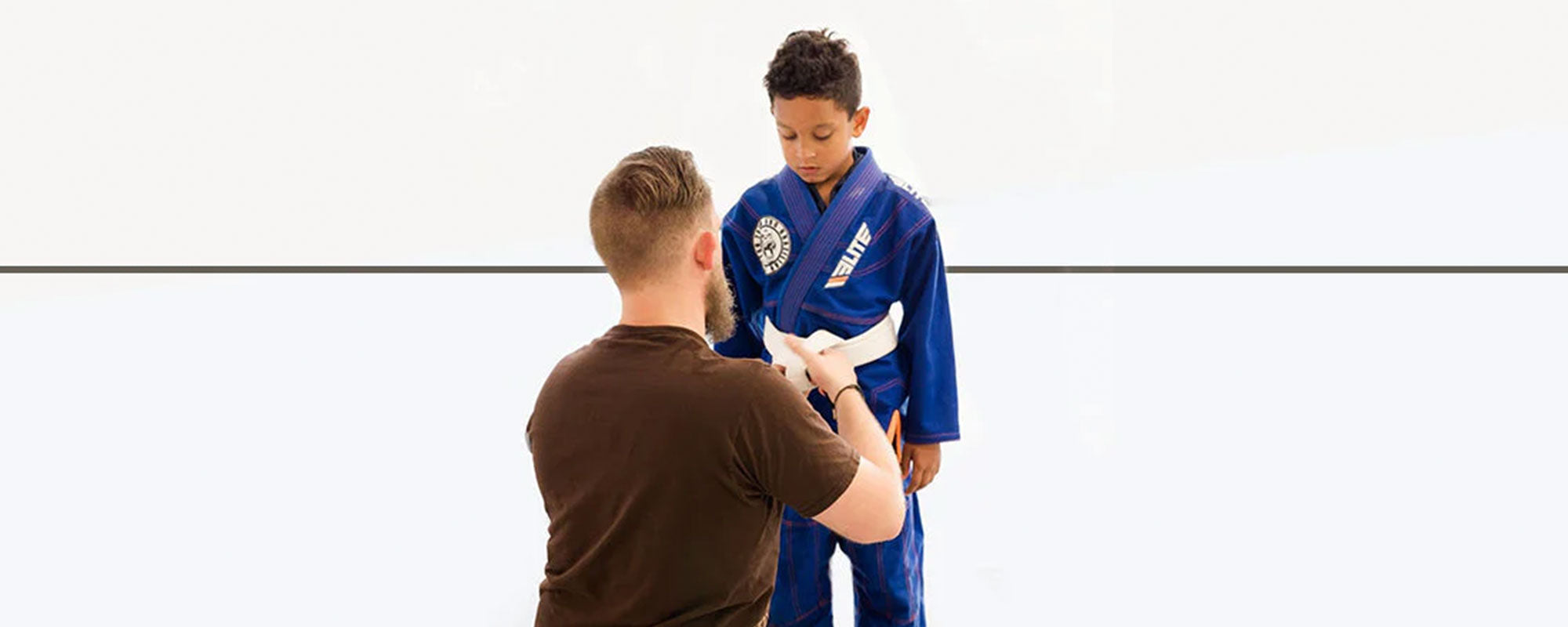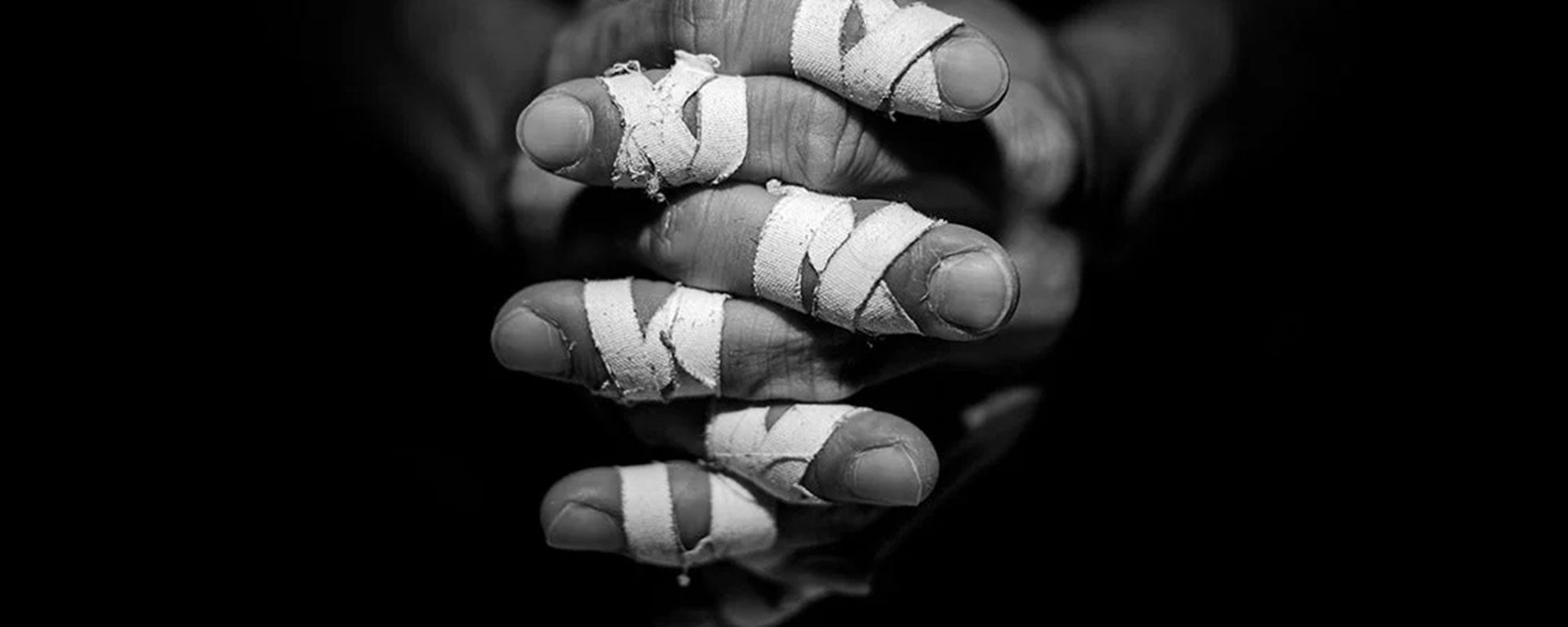Table of content
1. BJJ White Belts
One of the reasons Brazilian Jiu-Jitsu is different from other martial arts is because of its belt ranking system. The white belt is the first belt a BJJ athlete earns. At this level, white belt holders only focus on the basic moves and submission techniques.
White belts can be passionate about learning new techniques. However, it's a long process to master even the most basic of submissions.
2. 8 Best Submission techniques for BJJ White Belts
Learning submission techniques can be difficult for BJJ white belts as the moves can be complex with most fighters not knowing the proper steps. Everybody has different styles and interpretatios of how to approach different submissions.
- Armbar
- The Americana
- The Kimura Lock
- Triangle Choke
- Straight Ankle Lock
- D'arce Choke
- Bow and Arrow Choke
- Rear Naked Choke
2.1. Armbar
The simplest and most effective submission move in BJJ. Learning the armbar technique will help you develop excellent offensive skills. You can perform this submission technique efficiently and almost anywhere. There are many variations of this technique like the straight armbar, closed guard armbar, side control armbar, etc.

How to Practice the Armbar:
- Lay in a guard position, hold your opponent's neck and lock your legs so they surround the opponent's hip.
- Your knees should be against your opponent's shoulder, keeping their arms pinned.
- Move one side of the leg across their shoulders, moving your body so it is perpendicular with your opponent’s body.
- Move your upper leg around the neck and curl your toes so they are pointed down.
- Hold the wrist with both hands and make sure that the thumb is pointed outward.
- Make sure you have a firm grip on the head with your legs; otherwise, a small gap will allow your opponent to escape.
You can also use the armbar submission from a mounted position to exert all of your weight on your opponent to gain complete control.
2.2. The Americana
Also called a "key-lock," the americana is one of the most basic moves practiced by white belts. It is the best submission method for when an oppoeont is sprawled on the ground. Though useful at a beginner level, it does not see much usage at a higher belt level due to experienced fighters being able to easily defend themselves.
Flexibility is necessary to pull off many submission methods, like the triangle choke armbar. However, this submission does not depend on flexibility, being simple and preferred by white belt learners.

How to Practice the Americana:
- When your rival is putting pressure on your neck, hold their shoulder and use an underhook to push them away.
- Hold their wrist and push down on the mat.
- Maintain your hold by grabbing your wrists and using an underhook.
- Move your opponent’s elbow close to his/her hip, then rotate your grip.
- Also, position your elbow close to your opponent's neck. If there is little space for you to maneuver, your opponent can find ways to defend against submissions.
It is an excellent submission technique for those who want to maintain dominance during a fight. You can perform variations in multiple ways in tandem with other moves like the mount. You can transition to the armbar while locked in the mount position.
2.3. The Kimura
The kimura is used by many competitors and is perfect for new learners. There are many variations to the kimura, like reverse kimura submission, closed guard kimura, and side control kimura lock.

How to Practice the Kimura:
- You have to exert weight on the underhook wrapped around your opponent
- Push their wrists to the ground with force by using your elbows
- Maintain your hold by grabbing your wrist with your free hand
- Rotating closer towards your opponent's armpit will keep your opponent's shoulders pinnned on the ground.
- Move your grip so that you move your opponent's hands above his/her head.
- Forcibly extend the arm so that the wrist is distanced from the body otherwise, the submission can be countered if your opponent grabs your pants.
With time, you will be able to perform this submission from any position.
2.4. Triangle Choke
The traingle choke is a head and arm choke in which you have to use your legs to put intense pressure on your rival's shoulders and neck. This submission is effective for all belt ranks and can be used by on and off the mat. This technique is popular since you can use it in combination with other moves. The most common variations of the triangle choke are:
- The Standard Triangle Choke
- The Rear Triangle Choke
- The Side Triangle Choke
- The Reverse or Inverted Triangle Choke
- The Arm Triangle Choke

How to Practice the Triangle Choke:
- When you are in a close guard position, hold your opponent's neck to throw off your opponent's balance
- Then push the wrists opposite of your rival's chest.
- Move your upper leg over the neck and across the shoulder.
- To finish the submission, move back by using your shoulders and pull your rival's head down.
2.5. Straight Ankle Lock
Also referred to as the "foot lock," the straight ankle lock is an excellent leg lock as doing the straight ankle lock before your opponent always gives you an edge.

How to Practice the Straight Ankle Lock:
- Hold your opponent's feet and knees as you fall to one side.
- Your opponent's legs and hips will also fall onto the same side.
- Move one hand to your chest and take hold of your opponent with the other, moving your head towards your shoulder.
- Place you feet on top of you opponent's hips when you fall. You can give them an easy sweep if you don't step on their hips.
- Make sure to fall on your side to strengthen your grip. If you fall straight, it will give your opponent a simple sweep.
The key to this lock depends on how you apply pressure. You have to apply pressure at the center of your opponent’s body.
How to Improve the Straight Ankle Lock:
Moreover, you can improve your straight ankle lock by remembering these pointers:
Turn Your Wrist Correctly - One of the critical factors in this submission is the positioning of your wrist. Whenever you use this submission, always rotate your wrist in an upward direction so that the radius bone of your wrist is pinching the opponent's tendons. This will put a lot of pressure and pain on your opponent, increasing your chances of winning.
Hands-on Chin - You will have to move your hands towards your chin. This will reduce the space between your opponent's ankle and your arms. This lowers the chances of your rival defending against the submission.
An Elbow Pinch to Reduce an Inch - This includes the strength of your elbow pinch. When you trap your opponent's ankle, you have to pinch by bending your elbow to reduce space that your opponent could use to try and get free.
2.6. D'arce Choke
BJJ has many head locks, with the D’arce choke being one of them. This choke can be used from different positions, whether you are on top of or under your opponent, you can execute this highly effective submission.
How to Practice the D’arce Choke
- When you are doing a front headlock, move your arm below your opponent's armpit while bypassing the neck
- Close your hands the thumb should be adjusted between the space between your fingers
- Move your elbows closer and push your shoulder into the opponent's chest while throwing him/her to one side
- In the end, move your hand down into your opponent's neck and then press everything together as you stay low to the groudlie down
- When you've locked around your opponent's limbs, lift your hand and squeeze it as hard as possible.
Once you have set up the dar's lock, don't move to the mount position. Otherwise, it will be a terrible squeeze. Moreover, when you are in the top guard position, you have to move your opponent's arm across their body before they can counterattack the d’arce lock.
Tips for Practicing D'arce Choke
- This choke is similar to an anaconda choke. Make sure to move your arms under your opponent's arm and reach around opposite sides of the neck.
- You can also do a chokehold by using the blade of your forearm. Your biceps can easily choke your opponents. However, the forearm blade makes the choke more powerful.
- In any front headlock, always bend your opponent's neck.
2.7. Bow and Arrow choke
It is one of the most potent chokes due to having the highest submission rate in BJJ tournaments. Its strategy is the same as the rear-naked choke. In both of these chokeholds, you have to attack the neck's carotid artery. It will slow blood flow to the brain, making your opponent sleepy.

How to Practice the Bow and Arrow Choke:
- From behind your opponent, grasp the collar with one hand and move your other hand towards the knee.
- You have to position yourself at an angle that will move their legs towards you.
- Shift your legs to your opponent's shoulders and cross the ankles.
- When doing this choke, always keep your shoulder behind your opponent's neck.
- If your opponent is on top of you, you can use this choke from behind with your shoulders positioned behind your opponent's neck, move from there, and cross your leg over and finish.
- You can use this choke from any position if your opponent's back is exposed.
Tips for Practicing the Bow and Arrow Choke
- The key to this choke is how strong your collar grip is, so practice on strengthening your grip.
- The less space between you andyour opponent, the more successful this choke will be.
- After gripping, you have to rotate your body with your opponent's movement, so practice rotating your body.
2.8. Rear Naked Choke
A rear naked choke is most commonly used for self-defense. It is sometimes referred to as a "blood choke" as it involves putting pressure on the arteries and jugular veins. Although it is most famous in BJJ, it is also used in other grappling arts.

How to Practice the Rear Naked Choke:
- Adjust yourself into a rear mounting position, then grip your opponent from behind. Your bottom hand should be holding your top hand.
- Then move your top hand around the opponent's shoulder. This move is dependent on how you grip your opponent's shoulder.
- Take out your bottom hand and entwine your hands together. This is an advantageous position as your arms are wrapped around your opponent's neck from the back.
- Again, grip the opponent's shoulder with your left hand and move your right hand to grasp the opponent's right hand. That will prevent your opponent from escaping the choke.
- Tighten your hold on the opponent's neck by bringing your hands closer together.
- Apply pressure by using your hands around the neck your left hand should be looped around touching your right shoulder when you start squeezing.
- You can make the rear choke stronger by forcing your opponent to stretch.
Please do not hold the rear choke for more than 20 seconds as it can lead to severe consequences, including serious injuries or even death.
3. Tips On How To Do Submissions For BJJ White Belts
- The key to pulling off a submission is how you position yourself before execute the technique. Being in a superior position will lead to more effective submissions. Most white belts don't know how to take a dominant position, resulting in the submission being easily reversed in most cases.
- You should always keep a strong posture. The way to defeat an opponent is by breaking his/her posture. During training, always make sure that you are maintaining good posture.
- If you want to make progress, you have to focus on relaxing. As a white belt, it can be tough learning to control your anger when your opponent is choking you. It will allow you to focus better and save your energy.
4. Conclusion
Most submissions are beginner-friendly and are integral to your journey of getting your black belt. With time, your understanding of submissions will deepen and you will learn different variations. Everyone's BJJ game is different. Whether you are moving at a slow pace or not, keep trying. As a BJJ beginner, it's essential to build a strong foundation and you can make your base stronger by starting to practice submissions.













Leave a comment
This site is protected by hCaptcha and the hCaptcha Privacy Policy and Terms of Service apply.